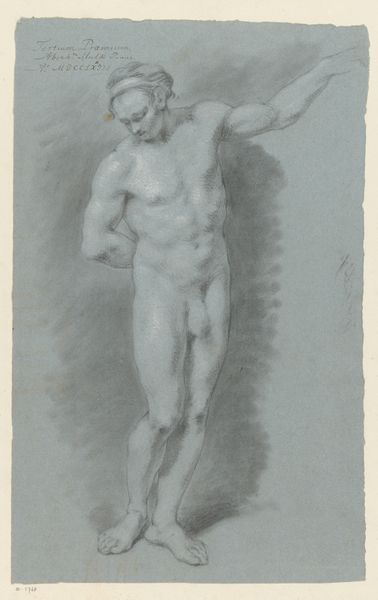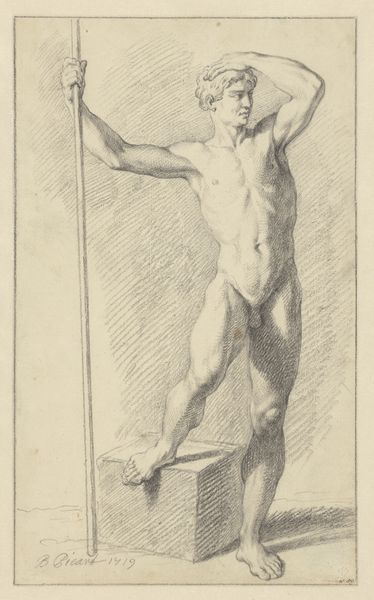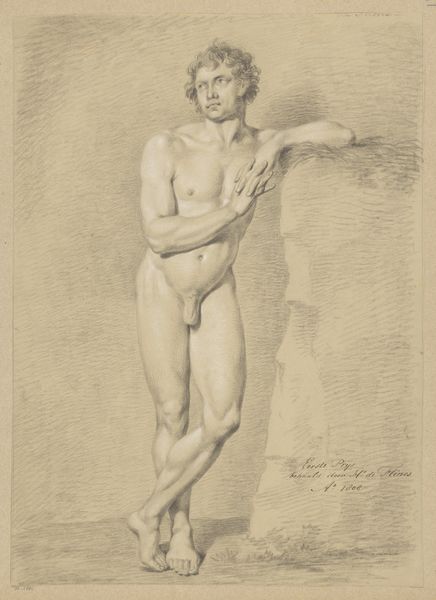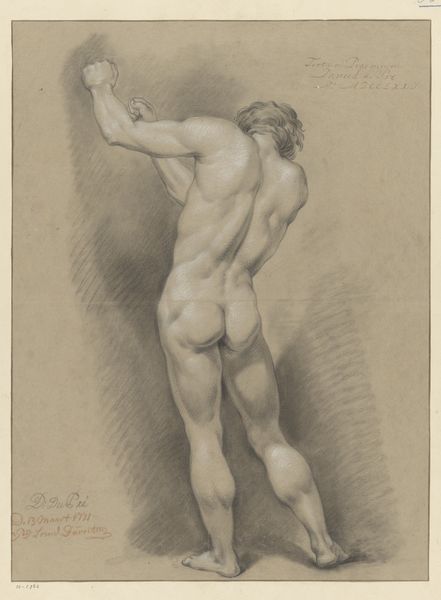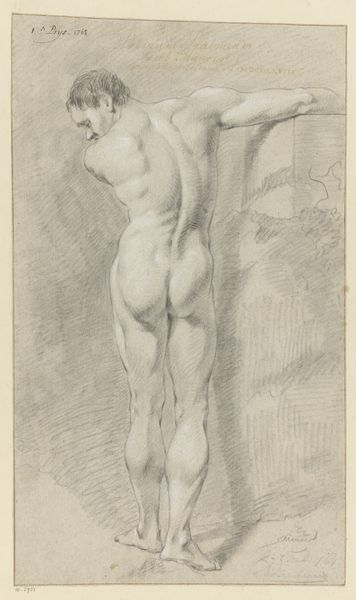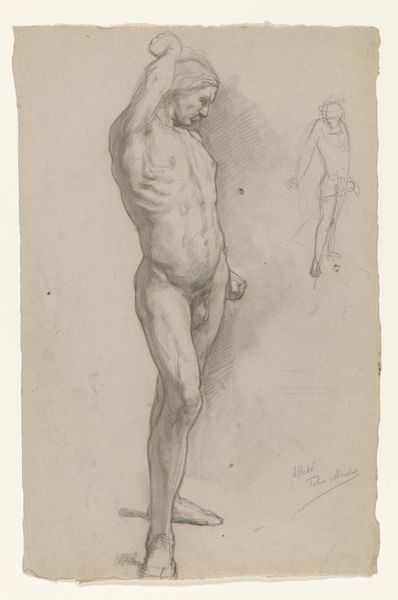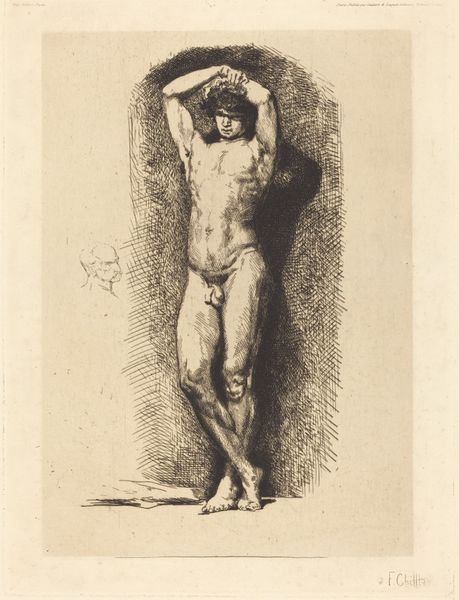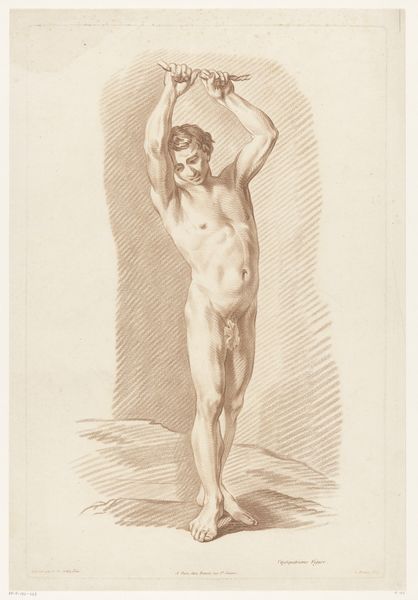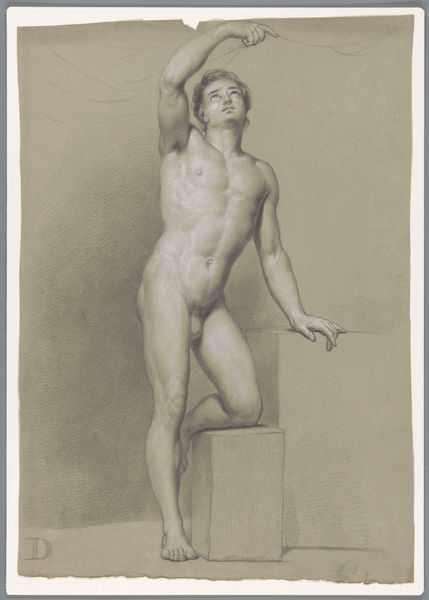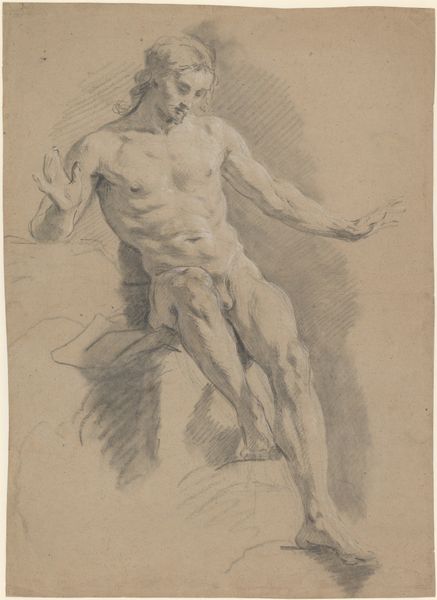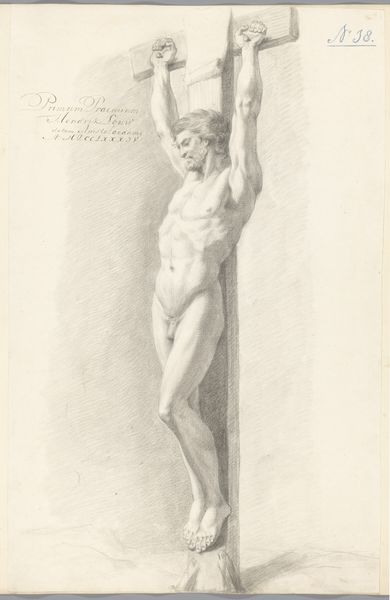
drawing, pencil
#
pencil drawn
#
drawing
#
pencil sketch
#
classical-realism
#
figuration
#
pencil drawing
#
pencil
#
portrait drawing
#
academic-art
#
nude
Dimensions: height 519 mm, width 341 mm
Copyright: Rijks Museum: Open Domain
Curator: I am immediately drawn to the light; it creates a very intimate space around the figure. There is such palpable softness and vulnerability rendered simply through line work. Editor: Here we have a work titled "Staand mannelijk naakt, van voren gezien," which roughly translates to "Standing Male Nude, Seen From the Front." It's a pencil drawing, most likely from 1776, and attributed to Jean Grandjean. What’s fascinating is that the inscription at the top indicates it won first prize that year. Curator: A first prize-winning nude drawing—that gives us some insight into the art academies of the late 18th century and the role of the human form in artistic training. Editor: Precisely. Academic art, as it was coming into full force, depended on a specific canon of beauty and an intense study of anatomy. You can really see that commitment here; every muscle, every curve is carefully considered. It’s as much an exercise in precision as it is an aesthetic statement. Think of how central the human form, particularly the male nude, was in communicating power and nobility. Curator: And the support beam becomes almost symbolic—a prop that hints at the construction, the artifice involved in achieving this seemingly naturalistic pose. Perhaps Grandjean is referencing something beyond the sheer likeness, perhaps a figure of restraint or strength. Consider the column as an important motif within the Western visual canon— it can represent everything from fortitude and resilience, but also oppressive stability. Editor: This work is an exercise of conventions and classical ideas regarding art. As a prize-winning piece, it tells us about what the academy valued but perhaps also subtly critiques those values through a carefully calibrated pose. Curator: It is a reminder that even in exercises seemingly devoid of overt emotion, the symbolic weight of the figure— and the elements surrounding him —can reveal broader emotional and cultural contexts. Editor: Indeed. These images gain resonance from being viewed by contemporary eyes, and in turn, can help us reflect on their cultural significance through the years.
Comments
No comments
Be the first to comment and join the conversation on the ultimate creative platform.
